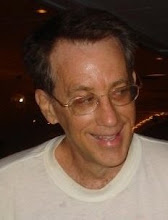Duncan, not Shaq, is an all-time Top 5 center
Gregg Popovich, Tim Duncan and the basketball media need to drop the pretense that Duncan is a forward. He's mostly a center — a supremely gifted and fluid one — and he should be compared to the greats who have played that position.
I rank him in the top five in the history of the game. I'm not sure of the order, but Duncan is in the elite class with Bill Russell, Wilt Chamberlain, Hakeem Olajuwon and Kareem Abdul-Jabbar. Behind that quintet is a one-man group consisting of the one man large enough to constitute a group, Shaquille O'Neal.
A huge difference between Duncan and Shaq is that Duncan has not required referee leniency to be great. Most every element of his game would be legal in any era. Granted, Duncan continues to take advantage of the modern refs' bizarre inability to spot obvious moving picks, and on rare occasions he'll "earn" two free throws by swinging his shooting arms in an odd, unnatural motion to initiate contact against an innocent defender (exploiting another aspect of official incompetence). But these make a minor contribution to Duncan's value. Not so with the official incompetence Shaq exploited. Back in 2002, in an essay on how to ref the behemoth, I noted this about the remarkably spry 30-year-old:
Most of what Shaq does on offense is beautiful. The principal reason he’s a handful is his combination of dazzling, lightning-quick footwork, massive girth, and an ever-improving repertoire of jumpers, bankers and jumphooks. But when the refs treat dislodging — not to mention three seconds and traveling — as a superstar’s right rather than a violation, Shaq goes from awesome to unstoppable.In the years that followed Shaq grew increasingly dependent on the application of (presumably illegal) brute force. Too much of his offensive game consisted of dislodging defenders with his hips or left-shoulder battering ram, spending more than three seconds in the lane, "walking" defenders under the basket, accidentally-on-purpose elbowing defenders in the head, finishing his low-post moves with jump stops (something Duncan has never done and which would have been called traveling in the pre-David Stern years), and sometimes pretending that he had a live pivot foot to work with after the jump stop and counting on the refs to be clueless or pretend right along with him.
Pardon the aside, but those are some of the reasons I think Stern has been an absolute disaster for the game of basketball, which is not to be confused with the business of basketball. Because of all the special privileges accorded Shaq, it's very difficult to compare him to these other legends. The league allowed Shaq, as well as his overmatched but often quite brutal and/or flop-prone opposing centers, to play football and a blend of sumo and pro wrestling.
If the refs — and the incompetent Rules and Competition Committee — had forced Shaq and his foes to be strictly basketball players, Shaq would have been a very different player. Quite possibly, he would have honed his legit basketball skills and been even better, and thus worthy of inclusion in the Greatest Group. But we'll never know, and the game is far worse off because of the way he was allowed to play, which led to most centers bulking up — and therefore slowing down — to prepare for banging battles in the paint. Who knows, maybe Greg Oden wouldn't have had the rash of knee injuries if he didn't put all those extra pounds on his young and (we now know) fragile frame in an effort to excel at the center "skills" of dislodging and resisting dislodgers.
Getting back to our center rankings, Group Three consists of Moses Malone, David Robinson, George Mikan and Artis Gilmore.
Group Four features three ferocious competitors who wore out their legs before turning 30: Dave Cowens, Willis Reed and Indiana Pacer legend Mel Daniels, who was a two-time ABA MVP and three-time champion.
Hot on their heels is Group Five: Patrick Ewing, Robert Parish and Elvin Hayes. (The Big E — one of the NBA's all-time great athletes — played center his first four seasons before joining Wes Unseld on the Bullets, where the two were interchangeable at the center and power-forward positions, though Elvin spent most of his time on offense in the left low post, where he was a bit too predictable for his own good.)
Group Six is comprised of Unseld, Walt Bellamy, Nate Thurmond, Bob Lanier, Jack Sikma and brittle Bill Walton. Group Seven consists of perhaps the most well-liked NBA personality of all time, Johnny "Red" Kerr, and the most despised, Bill Laimbeer.
If Walton had had healthy feet he likely would have landed in the first group or with Shaq. Good knees might well have elevated Lanier to the third group and possibly to Shaq's. Reed had just emerged as possibly the best center in the game in 1968-69 and 1969-70 when his knees started going bad at age 27. If he had been blessed with sound knees that could hold up to age 35 — or if the Knicks had provided caring, competent care from the moment the tendinitis first flared up — Reed might well have had a career worthy of that first group. Good knees might have helped another forgotten giant, Chicago Bulls' passing and rebounding whiz Tom Boerwinkle, reach Group Six.
Among active centers, Dwight Howard appears destined for Group Three or Four, although if he works with me he'll develop the spontaneous scoring skills and a rhythmic, repeatable 75-percent free-throw delivery that could catapult him to Group One. Still too many question marks remain about Joakim Noah and Andrew Bynum, but both have a shot at Group Six and possibly Five.

